
views
Planting Sweet William

Find out when your Sweet William will bloom. Due to the multiple varieties of Sweet William and the different methods of growing them, you may hear conflicting information on when your flowers will grow and how long they will last. Biennial varieties bloom in their second year, and then die. Perennial varieties are supposed to regrow flowers year after year, but Sweet William perennials usually take two years to bloom and often die before they bloom a second time. Correct care of Sweet William perennials increases the chance of reseeding, as described in the section on caring for Sweet William.

Acquire a growing plant if you want to see flowers within a year. If you want your Sweet William to flower reliably within a year, acquire seedlings or adult plants in fall or spring. Confirm with the previous owner that the plant will bloom this year before you take it home, since some seedlings may not flower until their second year. Seeds that claim to be annuals (flowering and dying within one year) may or may not live up to the promise, depending on the variety and how it reacts to your local climate.
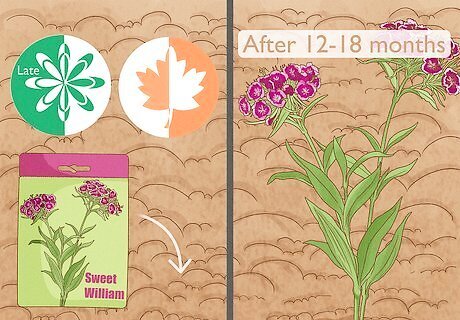
Decide when to plant. Sweet William seeds are tough enough to survive most winters, and can be planted in fall or late spring to bloom 12 to 18 months later. If the plants have already started growing, or if you are concerned about a harsh winter, you may keep the plants in indoor pots, then transplant them outdoors in early spring. Once the seedlings are six to eight weeks old, they will transplant easily, with low risk of causing damage.

Find an area with good sunlight but cool temperature. Sweet Williams grow fastest in full sun, but are best suited for cool climates. Ideally, they should receive four to five hours of direct sunlight a day, but planting them in light shade is a wise option if you live in a hot climate (USDA zone 8 and above).
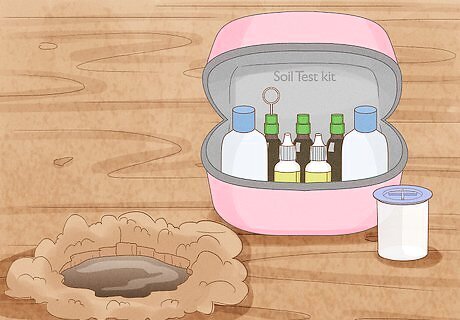
Check your soil. Sweet William prefers loose, rich soil that is well draining. Water should drain quickly through the soil, and never pool on top of compact, hard soil. Optionally, you may churn up the existing soil and supplement it with potting soil to provide more nutrients. While you do not need to test the pH of your soil to successfully grow Sweet William, you may adjust the pH to slightly alkaline (approximately 6.75) if you already have a pH garden kit. Garden soil pH kits are available at garden supply stores or online. Again, this is not a mandatory tool for growing Sweet William, which are fairly adaptable when it comes to soil pH.

Sow your seeds. Plant Sweet William in winter (hot climates only), spring, or summer (cool climates only). Place them on the surface and lightly cover them with 1/8 inch (0.6 cm) of soil, or dig a trench to this depth and refill after planting the seeds. Space the seeds 6 inches (15 cm) apart in ideal circumstances to reduce the chance of rot and disease transmission. If you do not have room to give them this much space, you may bunch them closer together, but take special care not to overwater in this case. If you are transplanting seedlings, simply transfer the soil around the roots into a hole twice as wide as the soil ball, then refill. Take care not to bury any part of the seedling's stem; the plant should be buried to the same level it was before.

Water after planting. Sweet William seeds and seedlings benefit from an immediate watering after transplanting, but take care not to soak them with more water than can drain from the soil. Transplanted seedlings should be kept in moist but not soggy soil for a few days. Once they are established and recover from any withering that may occur, care for them as described in the care section.
Caring for Sweet William
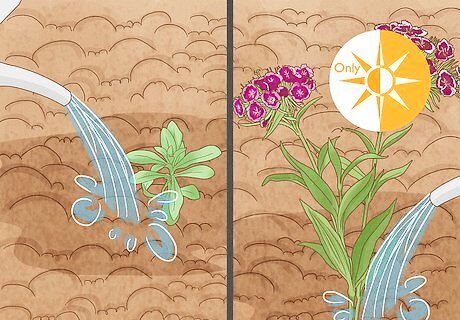
Water lightly. Keep the soil around seedlings slightly moist to slightly dry. Once the plant is mature and no longer growing, most varieties will not require watering except during hot weather. As with any plant, water more frequently if it appears withered or the soil cracks. Sweet William plants can rot if exposed to too much moisture, so be careful not to over-water. The soil should never feel soggy or contain pools of water.
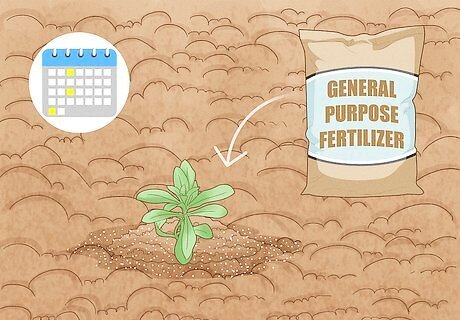
Fertilize the plants (optional). If you wish to encourage faster growth and flowering, apply a general-purpose fertilizer to the soil once every 2–4 weeks during the growing season (spring and summer, when growth or flowering is noticeable). Follow the instructions on your specific fertilizer carefully to avoid burning or damaging the plant. It’s usually a good idea to dilute the fertilizer even more than specified on the container.
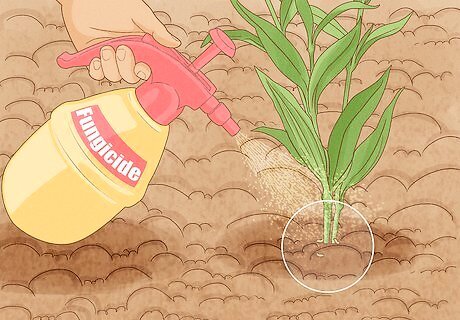
Treat young plants with insecticide. Spray a general purpose insecticide on young plants to discourage disease. Sweet William is susceptible to nematodes. If you see the presence of nematodes, which look like tiny, round worms, use a fungicide on the plants according to the manufacturer's instructions. Note: if you are planning to eat the Sweet William flowers or feed them to a pet, do not treat with any type of pesticide.

Deadhead the blooms. Sweet William plants typically bloom during late spring or early summer, and then lose their flowers to the summer heat. When the flowers of Sweet William plants have dried, gently cut them off and discard them. This will encourage new blossom growth, and prevent the plant from dropping seeds if you wish to control your garden more closely.
Multiplying Sweet William Plants

Allow thriving plants to reseed on their own. If your Sweet William plants are cared for correctly, and the variety is suited to the climate, there's a good chance they will seed your garden with a new generation before dying. If you want a wide scattering of Sweet William plants in your garden, simply let the flowers mature, die, and drop seeds on their own. Be aware that some flower varieties are hybrids of multiple plants, and may produce seeds that grow into plants with different appearance or characteristics than the parent plant.
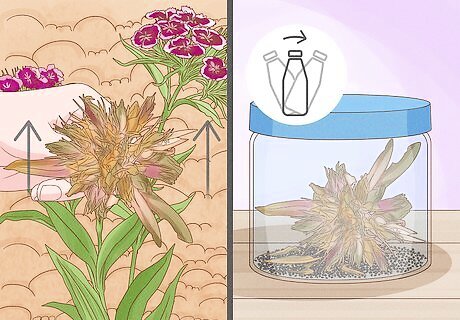
Harvest new seeds from the plants. In mid to late summer, after the flowers die, they will form dry, brown seed pods. Remove these once the pods are opening up at the end, about to release the seeds. Shake these pods into a container to get out the black, disc-shaped seeds for planting in fall or spring.

Cut off dry stems after the seeds have dropped. Once the seeds have dropped, or after you have harvested them yourself, cut the seed pods off at the stem. Usually, the Sweet William plants will have expended too much energy producing seeds to continue growing another year, but removing the pods will increase the chance of another bloom.
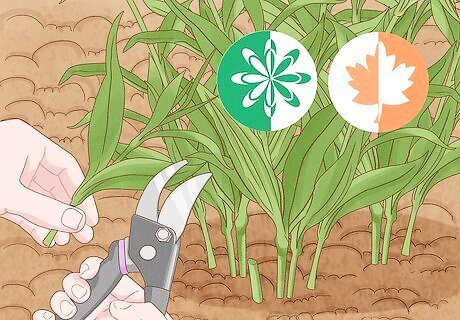
Take cuttings from mature plants. If you are lucky enough to have a Sweet William which survives more than a year or two, it may become quite large. In autumn or early spring, before much growth has started for the season, cut off one of the larger stems from near the base using a clean knife or shears. These cuttings can be planted to form new plants, although you may need to stake them to keep them upright. Newly planted cuttings take time to form roots. Keep them in a warm, moist area away from direct sunlight to prevent them drying out while this happens. A few days underneath a transparent plastic bag or container may help create the moist conditions it needs.




















Comments
0 comment